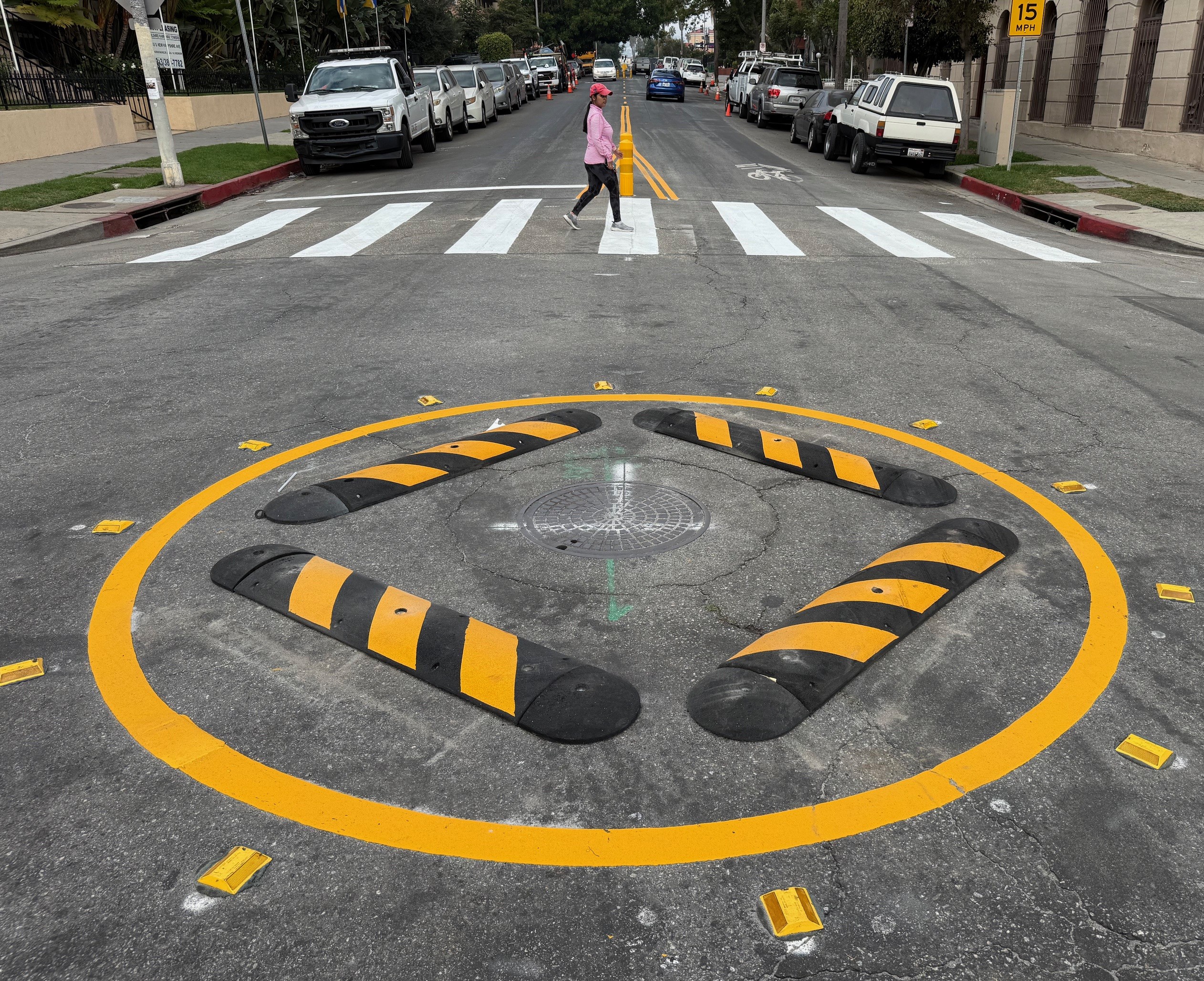Gordon Price began his lecture at City Hall yesterday by noting that big changes are coming as a result of global warming and a decline in the amount of oil the world can produce and warned that Los Angeles will be one of the cities that will see the most change.
But it didn't have to be that way. Back in the 1920's, Los Angeles, like Vancouver, was built around a streetcar system. The difference between how each city grew in the last 75 years can be described in two sentences, "Los Angeles committed to the car. Vancouver accommodated the car." Today in Vancouver, nobody is more than 1/4 mile away from public transportation, and in the walkable, bikeable downtown area more people walk or bike (to say nothing of transit) than drive.
To achieve this mode share, Vancouver had to do a lot of thing's differently than Los Angeles has been doing. First, it needed to re-zone and rebuild its downtown and neighborhoods. Price claimed the key to walkability wasn't just having wide sidewalks, attractive store fronts and minimal white noise (traffic of more than 30 mph reduces walkability because it impedes a conversation). A community also needs access to a mid-sized grocery store. Without it, people will get in their cars to go grocery shopping and once in their cars drive other places.
In Price's own neighborhood, a grocery store was put in the bottom floor of a high rise (that is easily accessible via foot traffic) and of the 230 spaces built below the store, there is never more than 1/4 of them being used.
Of course, parking, and the North American obsession with providing free parking, is also at the root of many urban ills. Price pointed to the Larchmont Village in Los Angeles as an example of the kind of development that works for both neighborhood residents and business owners. He then pointed out it would be illegal to build today under LA's parking codes because of a lack of car parking.
So, what are the results of the different planning styles we've seen between Vancouver and Los Angeles? In Vancouver's downtown, 49% of all trips were made by car in 1992, compared to 13% car pool, 23% transit and 15% walking/biking. The government set ambitious goals to change the mode share. By 2021 they planned to reduce driving to 36% and car pooling to 12% by increasing transit usage to 34% and walking and biking to 30%.
So far, they succeeded beyond their wildest expectations. By 2004, single-occupancy driving was reduced to 30% of all trips with car-pooling adding another 9%. Transit usage and walking/biking each achieved a 30% share meaning more people commute by transit, walking and biking than by car. By contrast, census figures show that in 2006 more than 70% of LA commuters drove in a single passenger vehicle and another 12% car pooled. Given that 6% worked from home that means about 1/5 as many workers either took transit, walked or biked as they do in Vancouver.
So, what can Los Angeles do now? Price didn't have a silver bullet answer, but the blueprint is there in his talk. But re-engineering our streets for all modes of transportation, reforming the parking code, adding more dense development, and rebuilding our mass transit system is easier said than done. But since we live in a world where oil is beginning to run out just as the competition for it is heating up, if Los Angeles wants to remain one of the world's premier cities we don't have a choice.





